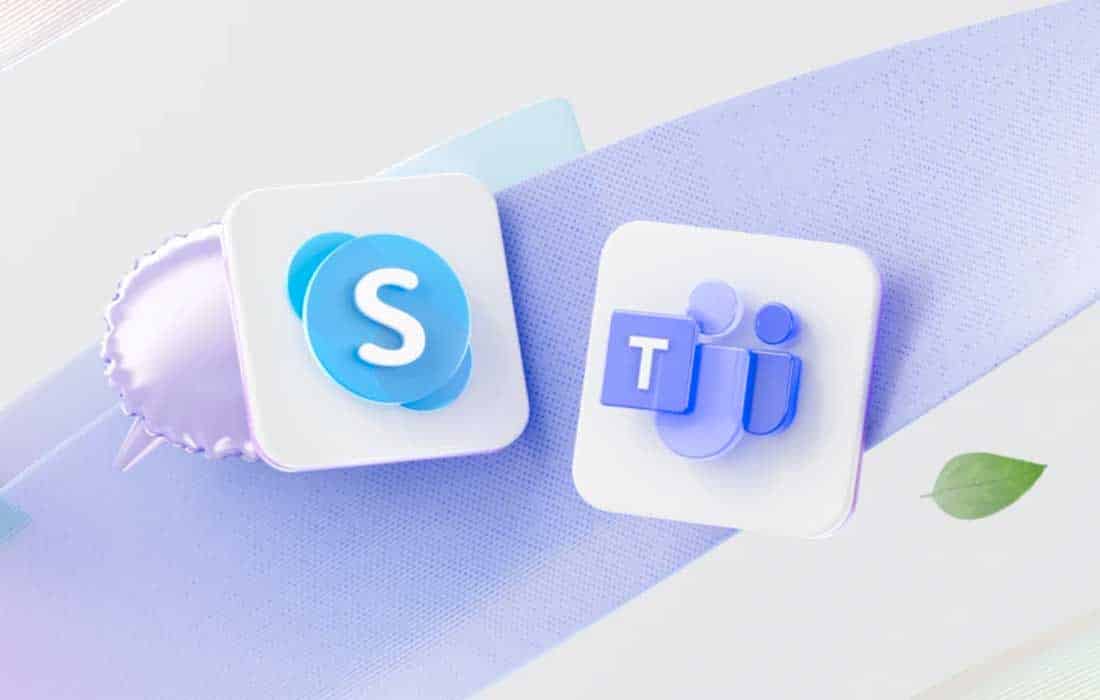
Microsoft has officially announced the end of Skype’s era as the company shifts its focus towards Teams as its primary platform for video calling and communication. After 23 years of providing messaging, voice, and video calling services to millions globally, Skype will no longer be a key player in Microsoft’s communication strategy. This move underscores a broader trend in the tech industry where organisations are consolidating their communication tools into more integrated solutions that offer a wider range of features and enterprise-focused capabilities.
Skype, initially launched in 2003, revolutionised online communication by allowing people to make voice and video calls over the internet. It quickly became the go-to application for personal communication and, at one point, was pivotal in facilitating business calls. Over the years, it expanded its offerings to include text messaging, file sharing, and group video calls, making it a versatile tool used across various devices, including desktop computers, smartphones, and smart TVs.
Despite its early success, Skype’s position in the market began to decline as newer platforms with more advanced capabilities, such as Zoom and Microsoft Teams, entered the space. The rise of remote work and digital collaboration tools only intensified this shift. Zoom, for instance, became a household name during the COVID-19 pandemic, offering a user-friendly interface and scalability that made it the top choice for both personal and business use.
Microsoft’s acquisition of Skype in 2011 for $8.5 billion was seen as a strategic move to strengthen its presence in the communications market. However, over time, Microsoft refocused its efforts on integrating Skype into its broader portfolio of products, including the Microsoft Office suite. It was integrated into Outlook and Office 365, but the rise of Teams has now made Skype increasingly irrelevant.
Teams, which was launched in 2017, has gradually eclipsed Skype’s role in Microsoft’s portfolio. Designed as a collaborative workspace for teams, it combines chat, video calling, file sharing, and other tools into one integrated platform. Its rise has been powered by the increasing demand for tools that support remote work, group projects, and business communication. The platform is now deeply embedded in Microsoft’s cloud-based ecosystem and has become the go-to solution for enterprises around the world.
Microsoft Teams offers features that are better suited to businesses, including advanced meeting functionalities, integration with other Microsoft Office products, and enterprise-grade security. It’s also equipped with artificial intelligence tools that improve productivity, such as automated transcription, meeting highlights, and the ability to schedule meetings based on attendees’ availability. As remote work continues to grow, Teams is seen as a vital tool for ensuring smooth communication within organisations, whether employees are in the office or working from home.
The transition from Skype to Teams has not been an abrupt one, as Microsoft has been slowly phasing out Skype’s prominence over the past few years. Teams has already replaced Skype for Business, a version of Skype designed for corporate users, in 2021. Now, Microsoft has officially signalled the end of Skype as a standalone product, with a full migration of users to Teams expected in the coming months.
For Skype users, the shift to Teams represents both a challenge and an opportunity. Those who are used to Skype’s simple and intuitive interface may find the transition to Teams more complex, as Teams is designed with a broader set of tools and business-focused features. However, Microsoft is offering support and training to help individuals and organisations make the switch smoothly. This includes webinars, tutorials, and dedicated support teams to answer any questions users may have.
The end of Skype also marks a significant shift in how video calling and communication tools are being used across industries. For years, Skype was synonymous with video calling, but now Teams’ versatility and business-oriented approach have made it the platform of choice for organisations looking to streamline communication across teams, projects, and departments. As Teams continues to evolve, it is expected to become even more powerful, with Microsoft integrating new AI-driven features that will make meetings and collaboration more efficient.
Skype’s exit from the spotlight also highlights the ongoing evolution of communication technology. Over the years, platforms like Skype, Zoom, and Teams have redefined how businesses and individuals connect, share information, and collaborate. Each platform has brought its own unique offerings, with Zoom excelling in simplicity and ease of use, while Teams has positioned itself as the all-encompassing tool for business communication.
The news of Skype’s phase-out has sparked mixed reactions. Long-time users, particularly those who have relied on Skype for personal communication, are mourning the end of an era. Skype’s simple interface and low-cost international calls were a hallmark of the platform for many years. However, for businesses, the shift to Teams is seen as a natural progression towards more integrated and feature-rich communication tools that go beyond video calls.


